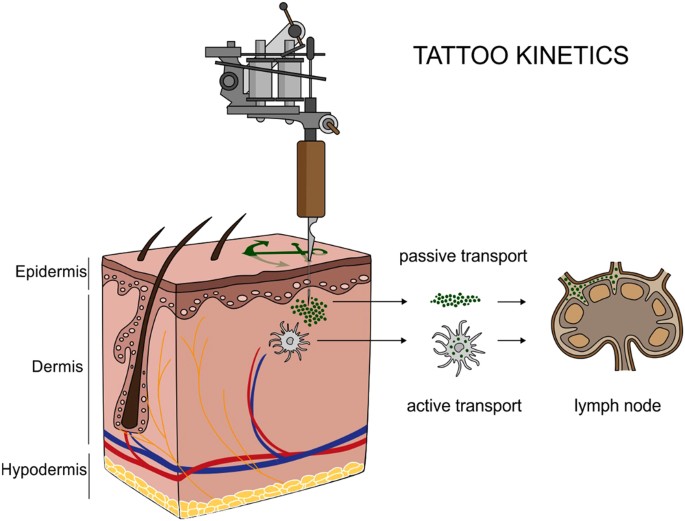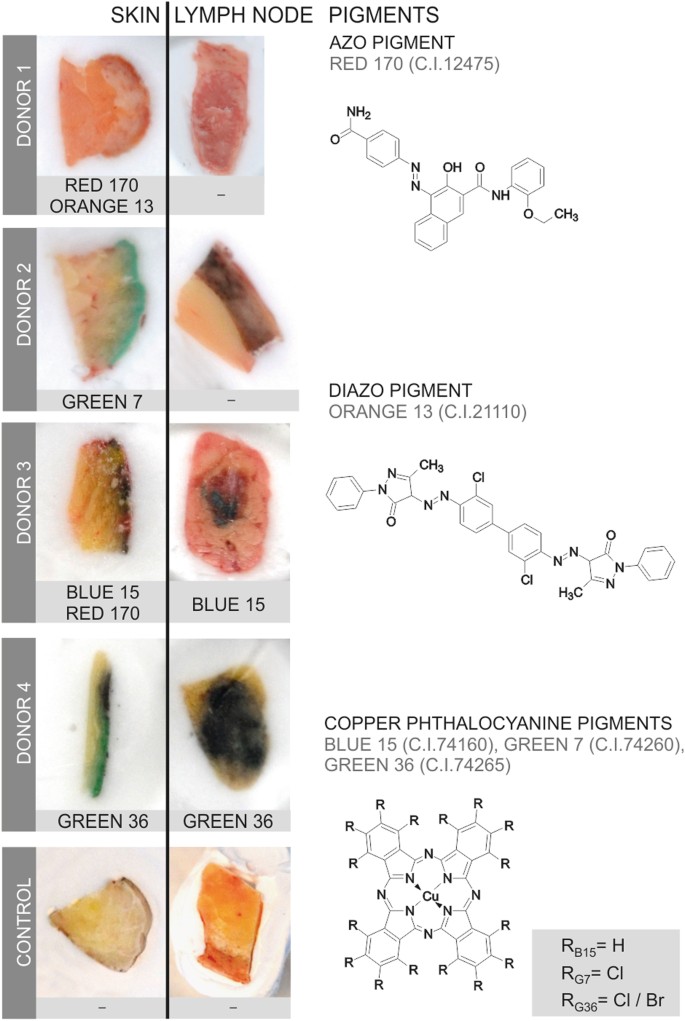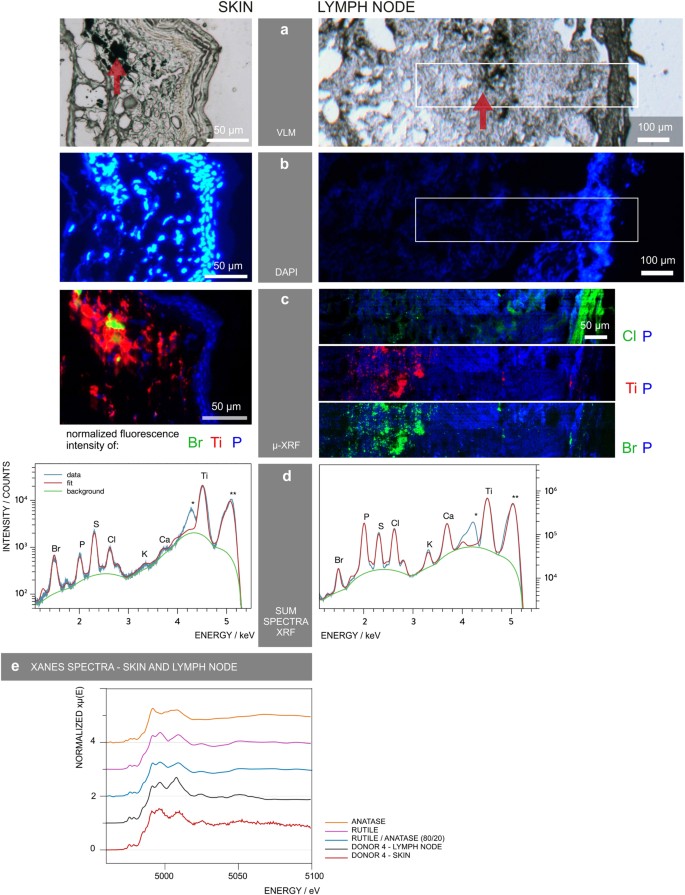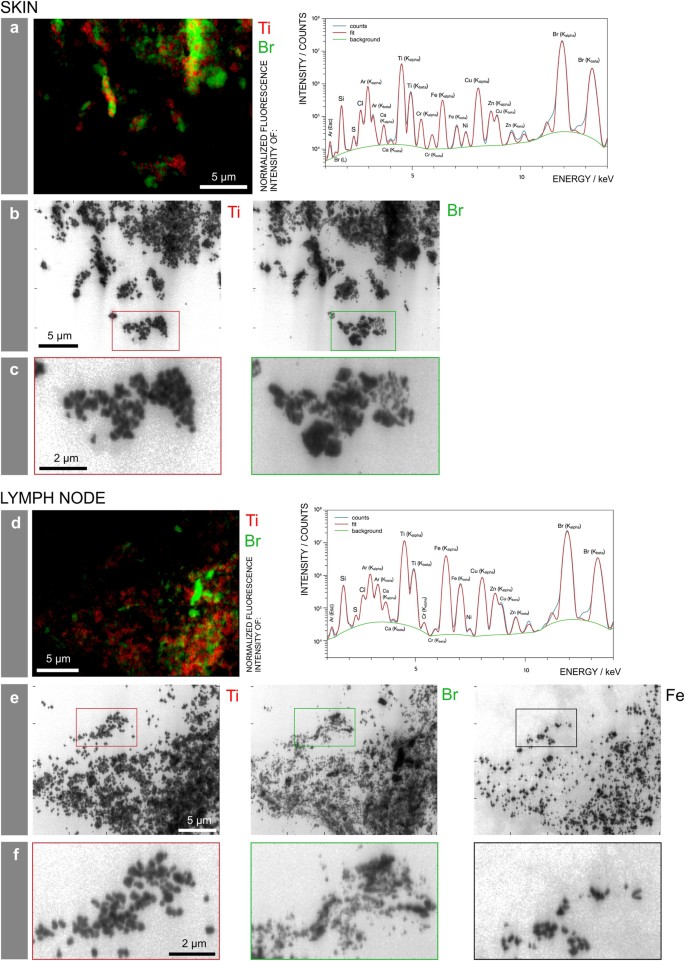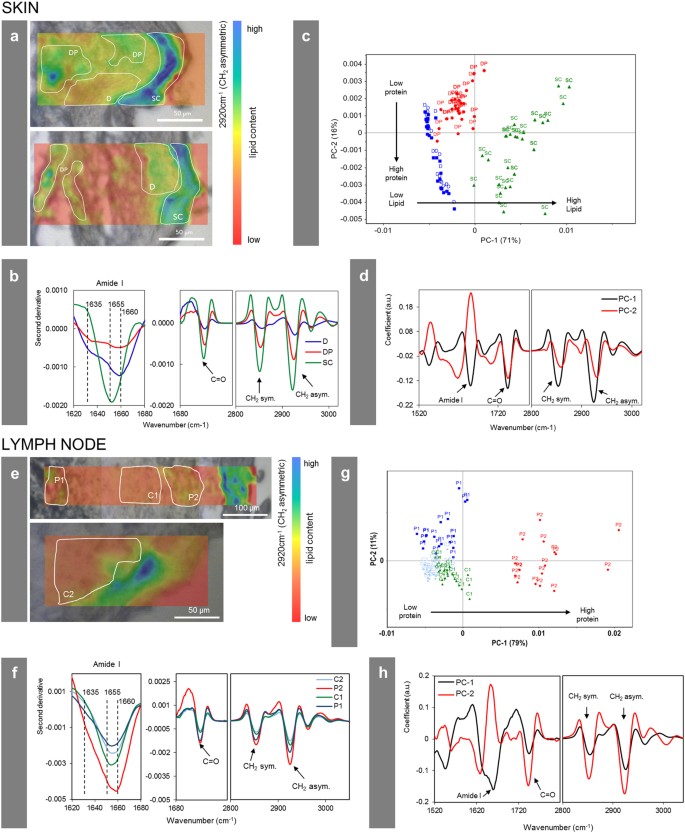En el logo de Apple hay una manzana mordida....Steve Jobs, lo hizo en recuerdo de Alain Touring
Infancia y juventud
Alan Mathison Turing nació en Paddington el 23 de junio de 1912. Sus padres Julius y Ethel residían en la India debido a que Julius trabajaba de funcionario en la India, pero decidieron volver al Reino Unido para que su hijo naciera allí. Esto hizo que Alan tuviera una infancia peculiar debido a los constantes viajes de sus padres entre Inglaterra e India durante los cuales dejaban a sus hijos al cargo de amigos.
Alan Mathison Turing nació en Paddington el 23 de junio de 1912. Sus padres Julius y Ethel residían en la India debido a que Julius trabajaba de funcionario en la India, pero decidieron volver al Reino Unido para que su hijo naciera allí. Esto hizo que Alan tuviera una infancia peculiar debido a los constantes viajes de sus padres entre Inglaterra e India durante los cuales dejaban a sus hijos al cargo de amigos.
A los 12 años entra en Sherborne School. Su jefe de estudios dijo de
él «si lo único que quiere ser es un especialista científico, está
perdiendo el tiempo en una escuela pública». Durante su estancia en
dicha escuela Turing perdió a su amigo Christopher Morcom por una
tuberculosis bovina contraída tras beber leche de vaca infectada. Esto
le hizo perder su fe religiosa y convertirse en ateo.
Tras Sherborne School, Turing fue a King’s College en Cambridge. A
pesar de que destacó en el campo de las matemáticas y la computabilidad,
en un artículo suyo de 1950 mostrará un toque filosófico/moralista ya
que relacionó el concepto matemático de la computabilidad con problemas
tradicionales como la separación de la mente y cuerpo, el libre albedrío
y el determinismo.
En 1931 formaliza el concepto de máquina de Turing sustituyendo así
el lenguaje formal que Kurt Gödel utilizaba sobre los límites de la
computación y la demostrabilidad. En 1935 es nombrado profesor del
King’s College, a la temprana edad de 22 años.
La Máquina de Turing
Desarrolló el concepto de la máquina de Turing. Una máquina de Turing es un dispositivo teórico que manipula símbolos de una cinta de entrada en función de unas reglas. Se define como un autómata, que mediante un cabezal lector que lee de una cinta de entrada símbolos de un alfabeto, cambiando entre estados en función de la entrada pudiendo rechazar o aceptar la cadena de entrada dependiendo del lenguaje que acepte. Dicha máquina era capaz de implementar cualquier problema matemático que pudiera representarse mediante un algoritmo. Formalmente se define en función de los estados que tiene dicho autómata el alfabeto de entrada y las transiciones que soportal. Es una herramienta básica para el campo de los autómatas y lenguajes formales.
Demostró el problema de la parada de una manera muy intuitiva, aunque dicha demostración la había publicado previamente Alonzo Church (cálculo lambda) con el que trabajaría en Princeton donde obtuvo en 1938 el Doctorado debido a sus estudios sobre la hipercomputación.
Desarrolló el concepto de la máquina de Turing. Una máquina de Turing es un dispositivo teórico que manipula símbolos de una cinta de entrada en función de unas reglas. Se define como un autómata, que mediante un cabezal lector que lee de una cinta de entrada símbolos de un alfabeto, cambiando entre estados en función de la entrada pudiendo rechazar o aceptar la cadena de entrada dependiendo del lenguaje que acepte. Dicha máquina era capaz de implementar cualquier problema matemático que pudiera representarse mediante un algoritmo. Formalmente se define en función de los estados que tiene dicho autómata el alfabeto de entrada y las transiciones que soportal. Es una herramienta básica para el campo de los autómatas y lenguajes formales.
Demostró el problema de la parada de una manera muy intuitiva, aunque dicha demostración la había publicado previamente Alonzo Church (cálculo lambda) con el que trabajaría en Princeton donde obtuvo en 1938 el Doctorado debido a sus estudios sobre la hipercomputación.
La siguiente etapa de su vida da un cambio radical ya que el objeto
de sus estudios no es investigación sin rumbo sino un fin específico: El
criptoanálisis.
La Segunda Guerra Mundial
Decide empezar a trabajar para el Ejército porque “Nada estaba haciendo nada al respecto”. En 1939 empieza a trabajar en Bletchley Park (estación secreta del Ejército) liderando el Hut- 8 que era una de las secciones de la estación Británica de “codebreaking” durante la 2ªWW. Fue uno de los principales protagonistas en el desmantelamiento y ruptura de la máquina Enigma, mediante la que el Eje ocultaba sus transmisiones. Tras la declaración de guerra del 3 de Septiembre , Turing se volcó en el criptoanálisis en Bletchley Park. Con el trabajo que habían realizado los criptoanalistas polacos, Turing desarrolló la “Bombe” que era una máquina capaz de romper el código de la Enigma. Pero no bastaba, el ejército polaco había interceptado una máquina enigma parecida a la que utilizaba el ejército alemán y sabían que aun así no les daría tiempo a descifrar mensajes, ya que cada día cambiaban la forma de cifrarlos.
En Diciembre de 1939 resolvió gran parte del indicador que era una parte de la configuración que se cargaba en la máquina cada día, en la misma noche concibió la idea de Banburismus (conocido como análisis secuencial). Desde 1940 en adelante el Hut-8 utilizó la bomba criptográfica para leer mensajes de la Lufftwaffe, en cambio el método utilizado por la Kriegsmarine era mucho más complejo y se tomaba por irrompible. Sin embargo Turing aprovechando el conocimiento que tenían de la máquina proporcionada por el ejército polaco desarrolló, el solo, un sistema para atacar el cifrado: El banburismo.
Decide empezar a trabajar para el Ejército porque “Nada estaba haciendo nada al respecto”. En 1939 empieza a trabajar en Bletchley Park (estación secreta del Ejército) liderando el Hut- 8 que era una de las secciones de la estación Británica de “codebreaking” durante la 2ªWW. Fue uno de los principales protagonistas en el desmantelamiento y ruptura de la máquina Enigma, mediante la que el Eje ocultaba sus transmisiones. Tras la declaración de guerra del 3 de Septiembre , Turing se volcó en el criptoanálisis en Bletchley Park. Con el trabajo que habían realizado los criptoanalistas polacos, Turing desarrolló la “Bombe” que era una máquina capaz de romper el código de la Enigma. Pero no bastaba, el ejército polaco había interceptado una máquina enigma parecida a la que utilizaba el ejército alemán y sabían que aun así no les daría tiempo a descifrar mensajes, ya que cada día cambiaban la forma de cifrarlos.
En Diciembre de 1939 resolvió gran parte del indicador que era una parte de la configuración que se cargaba en la máquina cada día, en la misma noche concibió la idea de Banburismus (conocido como análisis secuencial). Desde 1940 en adelante el Hut-8 utilizó la bomba criptográfica para leer mensajes de la Lufftwaffe, en cambio el método utilizado por la Kriegsmarine era mucho más complejo y se tomaba por irrompible. Sin embargo Turing aprovechando el conocimiento que tenían de la máquina proporcionada por el ejército polaco desarrolló, el solo, un sistema para atacar el cifrado: El banburismo.
El banburismo es un proceso de criptoanálisis que desarrolló Alan Turing
en Bletcheley Park (instalación militar orientada a romper la máquina
enigma). El proceso se basaba en la probabilidad condicional secuencial
para deducir información acerca de las configuraciones de la máquina
Enigma. El objetivo del banburismo era reducir el tiempo necesario para
que la «Bomba» identificara los patrones de los rotores ya que reducía
mucho las posibilidades. En 1939 Turing consiguió romper el código ahora
solo quedaba capturar mensajes trabajo que hizo la marina. El
procedimiento aprovechaba la debilidad del indicador (configuración
inicial de la Enigma) comparaban mensajes criptados con distintas
configuraciones, si el desplazamiento sólo se diferenciaba de un
carácter (CFE-CFT cada letra corresponde a un rotor), podían obtener
dicho desplazamiento. En 1941 se empezó a descifrar formalmente
mensajes, en particular del submarino U-boat. El Hut 8 aplicó dicho
procedimiento durante 2 años, hasta 1943 cuando empezó a ser factible el
plan de la bomba criptográfica. Esto dio una gran ventaja al bando
aliado en la batalla del atlántico cuando EEUU entró en la guerra. En
ese momento Turing tuvo un rol de ingeniero electrónico, ideó el
concepto de la mecanización de la ruptura del material FISH (teletipo),
aunque fue MHA Newman quien desempeñó el papel organizativo. La mezcla
de las ideas sobre estadística de Turing junto con la electrónica a gran
escala tuvo resultados trascendentales.
Durante los últimos años de la guerra, Turing colaboró en la creación
del Colossus, una máquina totalmente electrónica, que tuvo gran
importancia para la invasión de Europa por parte del bando aliado al
descifrar un mensaje en el que los alemanes decían que el desembarco se
iba a dar lugar en en Calais, al conocer esta creencia del enemigo, los
americanos decidieron encauzar el desembarco a las playas de Normandía.
Turing consideró dicha máquina como un cerebro primitivo.
Cabe destacar, que debido a ser secreto de estado, la implicación de
Alan Turing en la desencriptación de códigos nazis no fue revelada al
público hasta 1970. Por lo que murió sin que la gente supiera de su
contribución a la victoria de la guerra.
Pasada la segunda guerra mundial
En 1944 ya mencionó al ingeniero civil Donald Bailey sobre la «construcción de un cerebro», entre 1945, año en el que comenzó a trabajar en el National Physical Laboratory, y 1947, un año antes de abandonar el NPL, se dedico a dicha empresa. Existía un proyecto similar llamado EDVAC desarrollado paralelamente por los americanos pero el Automatic Computing Engine (ACE) de Turing se diferenciaba del proyecto estadounidense en que incluía la implementación de funciones aritméticas en circuitos electrónicos. Turing tenía en mente crear una máquina que pudiera ser configurada para hacer cálculos algebraicos, desencriptar códigos, manipular archivos e incluso jugar al ajedrez.
En 1947 creó el Abbreviated Code Instruction, origen de los lenguajes de programación.
A diferencia de la época de la segunda guerra mundial, en aquella ocasión no tuvo el apoyo de ingenieros y científicos, por lo que el ACE no se llegó a construir.
Gracias a la colaboración del ingeniero Frederic Calland Williams en 1948 se da por primera vez una demostración del principio de la máquina de Turing. Mientras tanto, estuvo entrenando como corredor de fondo y estuvo cerca de participar en los Juegos Olímpicos de ese año en representación de Inglaterra.
En 1944 ya mencionó al ingeniero civil Donald Bailey sobre la «construcción de un cerebro», entre 1945, año en el que comenzó a trabajar en el National Physical Laboratory, y 1947, un año antes de abandonar el NPL, se dedico a dicha empresa. Existía un proyecto similar llamado EDVAC desarrollado paralelamente por los americanos pero el Automatic Computing Engine (ACE) de Turing se diferenciaba del proyecto estadounidense en que incluía la implementación de funciones aritméticas en circuitos electrónicos. Turing tenía en mente crear una máquina que pudiera ser configurada para hacer cálculos algebraicos, desencriptar códigos, manipular archivos e incluso jugar al ajedrez.
En 1947 creó el Abbreviated Code Instruction, origen de los lenguajes de programación.
A diferencia de la época de la segunda guerra mundial, en aquella ocasión no tuvo el apoyo de ingenieros y científicos, por lo que el ACE no se llegó a construir.
Gracias a la colaboración del ingeniero Frederic Calland Williams en 1948 se da por primera vez una demostración del principio de la máquina de Turing. Mientras tanto, estuvo entrenando como corredor de fondo y estuvo cerca de participar en los Juegos Olímpicos de ese año en representación de Inglaterra.
Tras la salida del NPL, se puso al cargo del laboratorio de
computación de la Universidad de Mánchester, donde realizó parte del
software del Mark I y escribió el artículo «Computing Machinery and
Intelligence». En este artículo Turing desarrolló la idea de la
inteligencia artificial y propuso el test de Turing que es capaz de
discernir una máquina de un ser humano.
En 1950, sus antiguos colegas del NPL hicieron una versión reducida de la máquina inicialmente ideada por Turing, la Pilot Model ACE.
En 1950, sus antiguos colegas del NPL hicieron una versión reducida de la máquina inicialmente ideada por Turing, la Pilot Model ACE.
Los dos últimos años de su vida Turing dedicó sus esfuerzos a la
formación de patrones y la biología mecánica, más concretamente estudió
el proceso que controla la distribución organizada de las células de los
organismos (morfogénesis) y si éste seguía la secuencia de Fibonacci.
Dichos estudios dieron como resultado su escrito «The Chemical Basis of
Morphogenesis».
Juicio y muerte
Desde el final de la guerra la inteligencia británica había decidido vigilar a Turing, pues sabían de su homosexualidad y no querían que alguien que sabía tantos secretos de la seguridad británica estuviera expuesto al chantaje. Finalmente, en Marzo de 1952 Turing fue detenido con motivo de su homosexualidad, la cual fue descubierta a raíz de las relaciones que mantuvo con un joven mancuniano.
Tras el juicio, en el que no se quiso defender al no considerar que estuviera cometiendo ningún delito, se le dio a elegir entre la cárcel o un tratamiento hormonal a base de estrógenos para neutralizar su libido. Alan eligió lo segundo que, si bien le libró del presidio, lo llevó a unos cambios físicos y anímicos que desencadenarían en el final de su vida.
Alan Turing fue encontrado por su asistenta el 8 de Junio de 1954. Murió el día anterior por ingestión de cianuro. Oficialmente la muerte fue considerada suicidio, se dice que mordiendo una manzana a la que había inyectado el veneno, pero su madre defendió que murió por una ingestión accidental de cianuro tras un experimento químico.
Desde el final de la guerra la inteligencia británica había decidido vigilar a Turing, pues sabían de su homosexualidad y no querían que alguien que sabía tantos secretos de la seguridad británica estuviera expuesto al chantaje. Finalmente, en Marzo de 1952 Turing fue detenido con motivo de su homosexualidad, la cual fue descubierta a raíz de las relaciones que mantuvo con un joven mancuniano.
Tras el juicio, en el que no se quiso defender al no considerar que estuviera cometiendo ningún delito, se le dio a elegir entre la cárcel o un tratamiento hormonal a base de estrógenos para neutralizar su libido. Alan eligió lo segundo que, si bien le libró del presidio, lo llevó a unos cambios físicos y anímicos que desencadenarían en el final de su vida.
Alan Turing fue encontrado por su asistenta el 8 de Junio de 1954. Murió el día anterior por ingestión de cianuro. Oficialmente la muerte fue considerada suicidio, se dice que mordiendo una manzana a la que había inyectado el veneno, pero su madre defendió que murió por una ingestión accidental de cianuro tras un experimento químico.
Post mortem
En 1966 se creó el Premio Turing, organizado por la Association for Computing Machinery, está reconocido como el Nobel de la computación.
En 1966 se creó el Premio Turing, organizado por la Association for Computing Machinery, está reconocido como el Nobel de la computación.
Numerosas películas y novelas han tratado el tema de la máquina
enigma y el test de Turing. Un conocido ejemplo de este último, es el
film futurista Blade Runner de 1982, en el que se realizan entrevistas a
algunos sujetos con el objetivo de determinar si son humanos o
máquinas.
En 1990 Hugh Loebner con la aprobación del «Centro para Estudios del
Comportamiento de Cambridge» prometió un premio de 100000 dólares y una
medalla de oro para la primera máquina cuyas respuestas fueran
indistinguibles de las humanas. Cada año se da un premio de 3000$ y una
medalla de bronce a aquella que se acerque más a este objetivo.
Más información del premio Loebner:
http://loebner.net/Prizef/2010_Contest/loebner-prize.html
Premio Loebner del 2010, un chat bot de nombre Suzette creado por Bruce Wilcox engañó a un juez tras 25 minutos de conversación:
http://www.newscientist.com/article/dn19643-prizewinning-chatbot-steers-the-conversation.html?DCMP=OTC-rss&nsref=online-news
Para hablar con el bot:
http://www.chatbots.org/chatbot/suzette/
Más información del premio Loebner:
http://loebner.net/Prizef/2010_Contest/loebner-prize.html
Premio Loebner del 2010, un chat bot de nombre Suzette creado por Bruce Wilcox engañó a un juez tras 25 minutos de conversación:
http://www.newscientist.com/article/dn19643-prizewinning-chatbot-steers-the-conversation.html?DCMP=OTC-rss&nsref=online-news
Para hablar con el bot:
http://www.chatbots.org/chatbot/suzette/
En 2009, el primer ministro británico Gordon Brown escribió una carta
de disculpa en la que reconocía la horrible forma en la que fue
tratado.

Ejemplo de CAPTCHA
Los captchas que normalmente nos encontramos por internet, son un
tipo de test de Turing, de hecho, la palabra CAPTCHA es un acrónimo de
«Completely Automated Public Turing test to tell Computers and Humans
Apart».
Referencias bibliográficas
http://es.wikipedia.org/wiki/Alan_Turing
http://en.wikipedia.org/wiki/Alan_Turing
http://www.microsiervos.com/archivo/ordenadores/gordon-brown-tratamiento-alan-turing-fue-horrible.html
http://www.portalplanetasedna.com.ar/maquina_enigma.htm
http://dis.um.es/~barzana/enlaces/Biografia_turing.html
http://www.turing.org.uk/bio/part1.html
http://anonymous-generaltopics.blogspot.com/2009/12/enigma-machine.html
http://www.csiargentina.com/saberhistoria/
http://www.telegraph.co.uk/news/newstopics/politics/gordon-brown/6170112/Gordon-Brown-Im-proud-to-say-sorry-to-a-real-war-hero.html
http://es.wikipedia.org/wiki/Alan_Turing
http://en.wikipedia.org/wiki/Alan_Turing
http://www.microsiervos.com/archivo/ordenadores/gordon-brown-tratamiento-alan-turing-fue-horrible.html
http://www.portalplanetasedna.com.ar/maquina_enigma.htm
http://dis.um.es/~barzana/enlaces/Biografia_turing.html
http://www.turing.org.uk/bio/part1.html
http://anonymous-generaltopics.blogspot.com/2009/12/enigma-machine.html
http://www.csiargentina.com/saberhistoria/
http://www.telegraph.co.uk/news/newstopics/politics/gordon-brown/6170112/Gordon-Brown-Im-proud-to-say-sorry-to-a-real-war-hero.html
https://histinf.blogs.upv.es/2010/11/01/breve-biografia-de-alan-turing/?fbclid=IwAR1kcbskmROaqDAs1oeQdhvpRoNAwMOcf7ygBKZEZHAfXn6XUdOvCgEGCVc
2.Que mide el test de Touring?
Una de las preguntas que se vienen haciendo hace mucho tiempo los
hombres de ciencia –y otras personas comunes como los escritores– es si
pueden existir máquinas inteligentes. Alan Turing, fundador de la
era tecnológica, consideraba que para saber si un dispositivo poseía
inteligencia había que confirmar que este podía comunicarse como lo
hacemos los seres humanos. Para ello propuso lo que se ha dado en llamar
el test de Turing. Veamos en qué consiste el test de Turing y cuáles han sido los resultados obtenidos desde su creación.
Ver también: Los aportes de Alan Turing a la ciencia
Test de Turing
El test de Turing fue presentado por su creador en 1950. Supuestamente, se trata de una prueba para medir la inteligencia,
y su punto de partida es que si un dispositivo se comporta
sistémicamente con inteligencia, entonces es una entidad inteligente.
Para
llevar a cabo esta prueba, se coloca un juez en una habitación y, en
otra contigua, una máquina y una persona. El primero debe juzgar,
mediante el lenguaje, cuál es el dispositivo y cuál el ser humano.
Comenzará
entonces a hacerles preguntas hasta descubrir las verdaderas
identidades. Ambos, máquina y persona, pueden dar respuestas falsas a
cada interrogante. La tesis central es que, si la máquina es hábil al
responder, podrá confundir al juez.
Resultados de la prueba de Turing
A lo largo del tiempo se han realizado diversos test de Turing para medir inteligencia artificial.
Los resultados no habían sido exitosos, esto es, ningún dispositivo
había pasado favorablemente dicha prueba hasta la actualidad.
En 1990, se dio inicio a un concurso anual llamado Premio Loebner,
cuyo objetivo es el mismo que el del Test de Turing. Hay un juez que
tiene frente a sí dos computadoras, una dirigida por un ser humano y
otra automática. Se establece un diálogo con cada una, mediante
preguntas y respuestas, para discernir cuál es cuál. Si la computadora
automática logra confundir al juez, el programa gana una gran cantidad
de dinero. El concurso no ha tenido aún un ganador.
Ver también:Singularidad tecnológica: fantasía o realidad
Éxitos en el Test de Turing
A
pesar de que hasta ahora no se habían tenido éxitos en el test de
Turing, he aquí que de pronto algo ha logrado pasar dicha prueba.
Ocurrió en Londres, hace poco tiempo, como homenaje a los 60 años de la
muerte de Alan Turing. Se trata de un chatbot, es decir, un robot para tener charlas por la web, de nombre Eugene Goostman, que simula ser un adolescente ucraniano. Al parecer, ha logrado convencer a más de 30 personas de que es un ser humano.
Sin embargo, los científicos se cuestionan qué mide el Test de Turing,
pues la inteligencia a través del lenguaje tiene que apelar a distintos
contextos para cada estructura, lo cual es muy complejo, pero si una
máquina accede a grandes cantidades de información, es posible que pueda
dar respuestas sensatas a las preguntas sin ser inteligente, solo por
trucos y artimañas.
Un cuestionamiento central sigue en pie: ¿mide el Test de Turing realmente inteligencia?
Tendremos que esperar a ver el curso que siguen las investigaciones en
los años venideros. Quizás después de todo no sea tan descabellado
imaginar un futuro donde haya robots que sueñen con ovejas.
vacacionesporeuropa.com/
3.La pelicula ENIGMA
(no seguir leyendo si hay intención de ver la pelicula)
Ante la crisis creativa de Hollywood, las biopics parecen
ser una alternativa confiable para buscar cierta originalidad. La
industria toma vidas extraordinarias para crear películas de fórmula con
diferentes calidades. Para El código enigma, el director noruego, Morten Tyldum, y el guionista, Graham Moore,
supieron elegir el momento perfecto en la vida de un genio para dar a
conocer de manera emocionante a una de las mentes que cimentaron
nuestros tiempos modernos, Alan Turing, cuyo mote al
final del filme expira contundencia y claridad: “el inventor de la
computadora”. El resultado es una película con tintes de thriller, en un
contexto de guerra, con mensaje y denuncia, cuya variedad de
ingredientes están empleados con puntualidad para no saturar el
resultado, sino para sumar a favor de la película misma, sin que haya
demasiada profundidad en alguno.
El código enigma siguió por lo menos dos de las reglas
básicas para lograr una buena película biográfica. Primero: tiene como
protagonista a alguien ya muerto, por lo que no pesa ni pesó su opinión
ni su existencia sobre lo que vemos sobre él en pantalla. Sus
realizadores pudieron actuar con libertad, honrando a su manera, aunque
maniobrando con la realidad según su conveniencia y prioridades.
Segundo: la película no intenta abarcar toda la vida de Turing; a través
de un periodo muy concreto, da cuenta de su ímpetu, de su carácter, de
las dificultades a las que se enfrentó y de sus inigualables logros. Y
lo adereza con flashbacks, sin olvidar cuál es el platillo principal. Lo
hace con soltura y el típico humor inglés sarcástico y autodenigrante,
ideal para exacerbar personalidades fuertes, antisociales y seguras de
sus objetivos.
Spoiler alert
El filme se enfoca en el periodo durante la Segunda Guerra Mundial en
el que el matemático fue contratado para descifrar, junto con un grupo
de especialistas, el Código Enigma, creado por una computadora, que
usaban los Nazis para comunicarse estrategias de guerra. Los mensajes se
transmitían por señales de radio, flotaban en el aire al alcance de
cualquiera, pero eran intraducibles. Y Turing fue el líder del equipo
que logró descodificarlo, como una especie de hacker, y lo hizo
rompiendo paradigmas: inventando una máquina que, mediante un algoritmo,
pudiera leer en minutos cualquier mensaje que hubiera sido creado con
el mismo código de programación que otro y que otro y que otro, y que
todos los que se enviaban entre sí los alemanes. Se trató de una guerra
entre computadoras, en la que la británica venció a la alemana. Aunque
el trasfondo de la historia son campos de batalla, las armas y los
muertos, los familiares devastados, las ciudades bombardeadas, en El código enigma
no vemos la catástrofe, pero sí una verdad aún más injusta y cruel, que
ya habíamos visto, aunque en su vertiente burocrática, en Zero Dark Dirty
(2012): mientras que en las guerras hay hombres dando su vida en los
campos de batalla, son solo carne de cañón; las grandes decisiones se
trazan con el cuerpo caliente, seguro, bien comido y bien vestido, y con
la mente fría y calculadora, entre caras paredes. Es ahí donde se
decide el destino de miles de vidas, donde se opta por el mal menor. El código enigma
nos permite ver, aunque de forma apresurada, el dilema trágico en el
que estos hombres de mentes y condiciones privilegiadas vivían, sabiendo
que mientras ellos estaban relativamente seguros, de su trabajo
dependían las vidas de millones. La película, creada para dar zancadas
de emoción en emoción, no permite que nos detengamos en estos
sufrimientos y les dedica apenas un puñado de diálogos. La mayor
atención que recibe el tema es cuando uno de los colegas de Turing pide
que eviten que se bombardee un barco de guerra británico (que, han
descubierto, es blanco alemán), porque su hermano soldado estará ahí, y
todos en el equipo saben que el precio de salvar a ese hombre podría ser
perder la guerra misma, pues los alemanes se percatarían del
conocimiento de los británicos y cambiarían inmediatamente el código ya
descifrado, lo que retrasaría indefinidamente el fin de la guerra. Lo
único que volvemos a saber de ese personaje es que, tiempo después,
mientras trabajan, le da un empujón a Turing con el hombro, sin voltear a
verlo, porque obviamente no ha superado el rencor. Pero ese choque más
bien es un pretexto para seguir avanzando la historia hacia otros
asuntos.
Como suelen resolverse las tramas demasiado especializadas en algún
campo científico, la película simplifica la ciencia, sobreexplica los
descubrimientos esenciales, exagera y/o trastoca rasgos de la
personalidad y anécdotas de la vida íntima de los implicados, a favor de
un guión y edición con ritmo, y de la accesibilidad y de la empatía que
puedan provocar las situaciones más coloquiales en las que puedan verse
envueltos los personajes. Todo le funciona a El código enigma.
Aunque jamás intenta acercarse a la complejidad de los descubrimientos
del matemático, muestra y dice lo suficiente para atrapar, envolviendo
con las bien equilibradas actuaciones, sobre todo de Cumberbatch, con esa personalidad de genio, encantadoramente odioso, y de su contraparte en el equipo, Matthew Goode,
que se muestra lo suficientemente seguro de sí mismo y perspicaz, para
soportar, sin conceder demasiado fácilmente, sus desplantes a Turing. Lo
mismo hace la música de Alexandre Desplat, que
balancea suaves armonías con melodías aceleradas, o viceversa,
acentuando la lejanía de la época que vemos y lo apremiante de la
situación.
Los pequeños nudos en la historia que crean expectativa se destensan
con humor, haciéndolo todo sumamente entretenido; por ejemplo, sucede
así con la entrevista de trabajo entre Turing y un general de alto mando
del ejército, en la que Turing no se pliega a la jerarquía marcial y
desde su presentación en pantalla desafía a la autoridad con
conocimiento y determinación, lo que será su modus operandi hasta el
cumplimiento de la misión. Está también la subtrama de la única mujer
matemática que colaboró en el proyecto, Joan Clarke (Keira Knightley),
que aunque en la realidad ya estaba ahí cuando Turing se incorporó, en
la película es reclutada por él. La relación entre ambos sirve para
exacerbar el tema de las presiones sociales y legales que vulneraban a
homosexuales y mujeres en ese entonces. En el caso de los primeros, eran
ilegales; en el caso de las segundas, como siempre, no debían destacar
como profesionistas, sino como amas de casa.
Por el tiempo que se le dedica, podría parecer que la homosexualidad
de Turing es tratada como secundaria, pero en realidad la denuncia que
se hace contrastando sus logros con el trato legal que recibió y las
consecuencias que tuvo, termina siendo lo más importante en la película.
Es claro que evitaron darle demasiado peso al tema para que no fuera
etiquetada como una película progay. Toda la historia del desciframiento
del código está impregnada de regresiones a su niñez, que ayudan a
comprender su dificultad para relacionarse y comunicarse, su pasión por
los códigos y las matemáticas, pero que sobre todo dan cuenta de su
primer amor hacia un niño del internado en el que creció que lo ayudó a
descubrir su vocación, a creer en él mismo y por quien eventualmente
bautizó a su máquina como Christopher (en la película, no en la
realidad). Las tribulaciones matemáticas están enmarcadas por el robo
que sufrió Turing en su casa después de que terminara la guerra; así
inicia el filme. Intermitentemente seguimos la subsecuente investigación
que iniciaron las autoridades, de la que se desprendió su
encarcelamiento por haber tenido una relación con otro hombre; tras ser
enjuiciado, se le dio la opción de mantenerse en la cárcel o someterse a
un tratamiento hormonal. La última vez que vemos a Turing en pantalla,
Joan lo va a visitar. Él se ve como un remedo de sí mismo, ansioso, con
manos temblorosas, incapaz de resolver un vil crucigrama de periódico.
En realidad, las consecuencias del uso de las hormonas fueron mucho más
drásticas. Prácticamente, las reacciones a las sustancias lo
desaparecieron en vida, después de torturarlo. El verdadero drama que
padeció este hombre, después de que sus descubrimientos, su tenacidad y
su temperamento lograran acortar la guerra salvando así millones de
vidas, se muestran en la película con subtítulos: su suicidio por las
insoportables inyecciones. El tardío perdón de la Reina otorgado en
2013, 61 años después de su muerte.
Como al terminar la guerra, el expediente de Turing y de todas las
investigaciones que se realizaron, se clasificaron durante décadas, ni
su nombre, ni sus logros, ni su tragedia, son tan conocidos como
debieran. El código enigma saca ventaja de esa ignorancia
generalizada para llevarnos a trote de suspenso. Sus realizadores
privilegian la imagen de un genio y los logros de un país (una vez más),
frente a la de un reprimido y sacrificado por el sistema. El regusto es
un tanto esquizofrénico: el fundador de uno de los pilares de nuestra
época fue héroe y mártir casi en simultáneo. Es un acertijo que la
película no intentó resolver.

